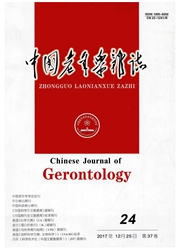

 中文摘要:
中文摘要:
目的探索地理因素对中国健康人窦性心率震荡参考值的影响,并建立预测方程,为统一该参考值提供科学依据。方法应用SPSS16.0软件对收集整理的47个市(县)级医院和有关科研单位的4 152例健康人窦性心率震荡参考值与海拔,年平均气温,年平均风速等7项地理因素指标进行相关分析,然后用回归分析方法分析健康人窦性心率震荡参考值与地理因素指标的关系。应用GIS软件拟合出中国健康人震荡斜率参考值的空间趋势分布图。结果窦性心率震荡定量化指标震荡斜率与海拔和年平均风速等地理因素指标均有显著相关性,并得出了相应的多元线性回归方程,拟合出中国健康人震荡斜率参考值的空间趋势分布图。结论窦性心率震荡参考值的建立应考虑地理因素的影响,空间趋势分布图的制作将更方便临床医生的诊断。
 英文摘要:
英文摘要:
Objective To explore the relationship between the sinus heart rate turbulence in healthy people and geographic factors , to have a better understanding on the geographical distribution of the reference value of healthy adults ′sinus heart rate turbulence .Methods Correlation analysis and regression analysis with SPSS 16.0 software were used to analyze the relation between 7 geographical factor ( alti-tude,annual average temperature ,annual average wind speed and so on ) and the reference value of sinus heart rate turbulence of 3 467 healthy people whose data were collected from 47 city ( county) level hospitals and relevant scientific research units ,and made out the spacial interpolation of the turbulence slope reference value of healthy Chinese .Results There was a significant correlation between sinus heart rate turbulence quantitative indicators of turbulence slope and altitude ,annual average temperature ,annual average wind speed ,and reached the multiple linear regression equation .Conclusions According to the equation ,the effect of geographical factors should be considered while set-ting the reference value of sinus heart rate .And spatial distribution maps could make medical diagnosis easier .
 同期刊论文项目
同期刊论文项目
 同项目期刊论文
同项目期刊论文
 期刊信息
期刊信息
